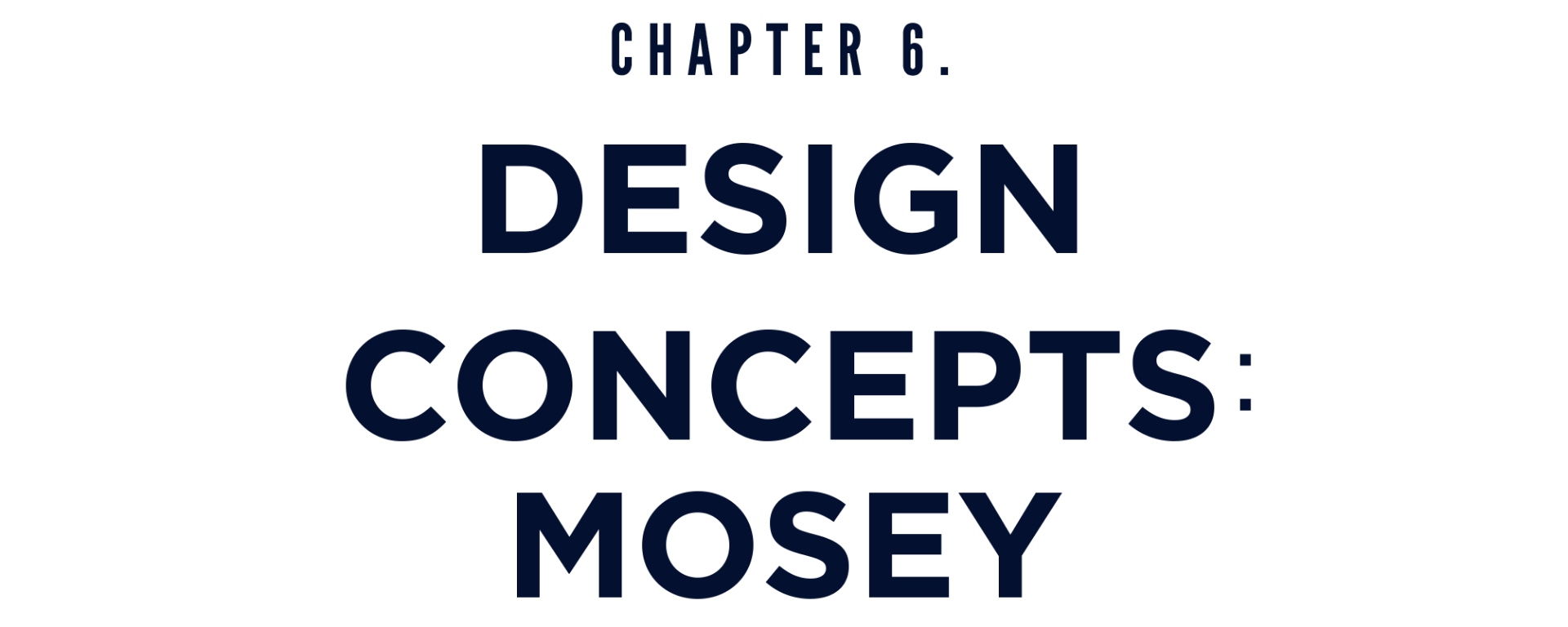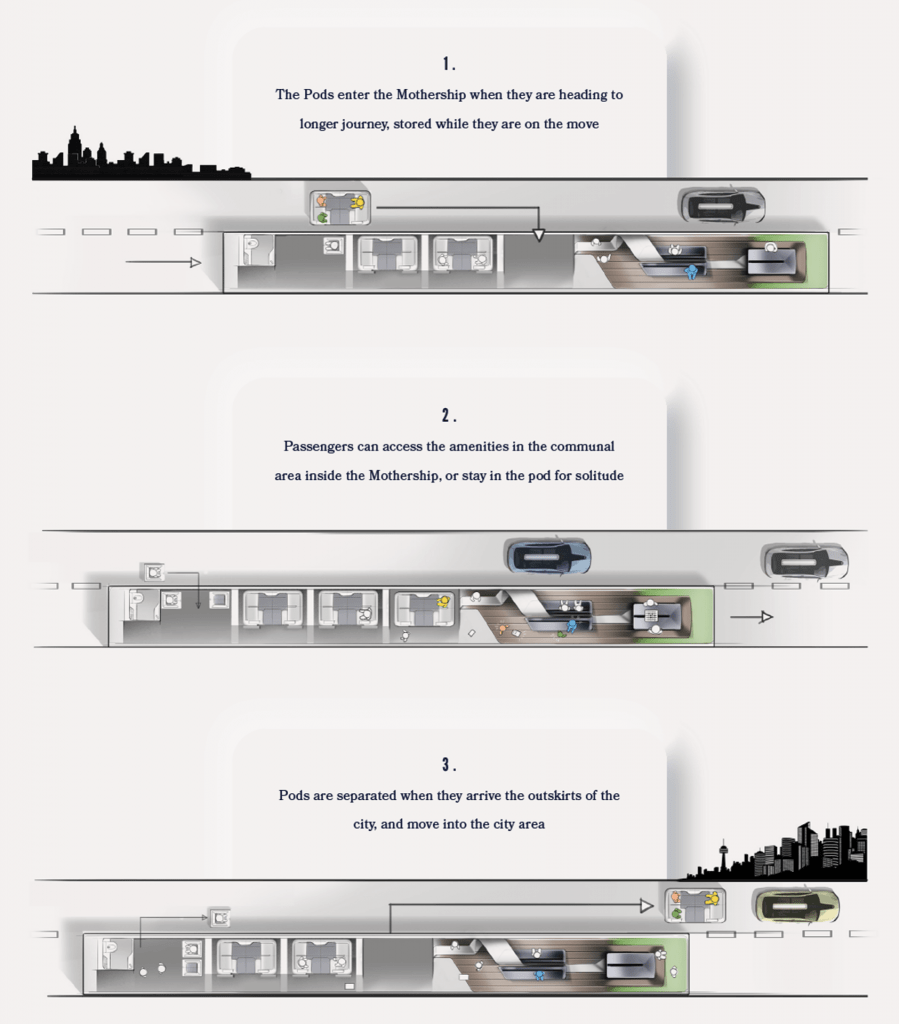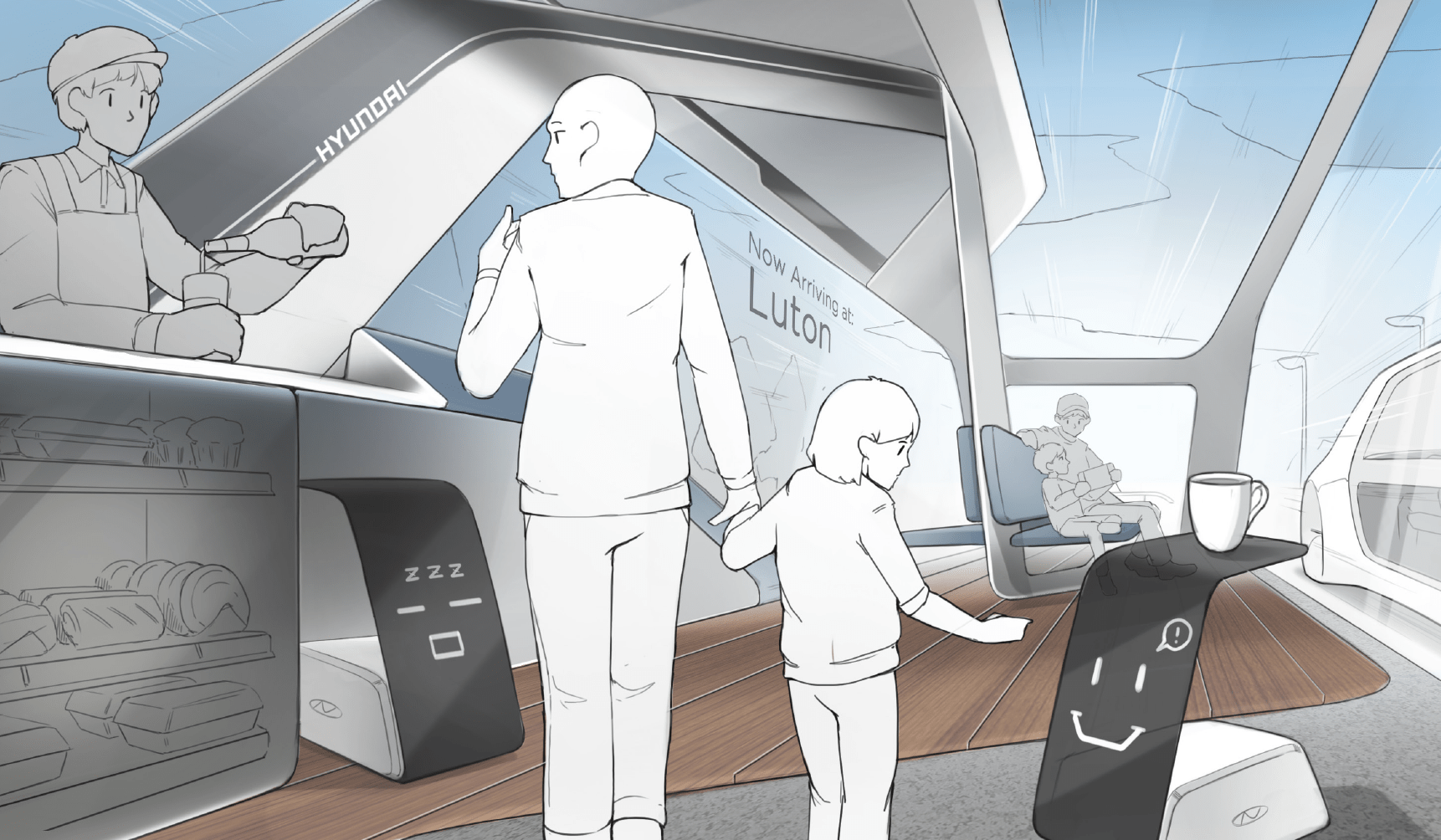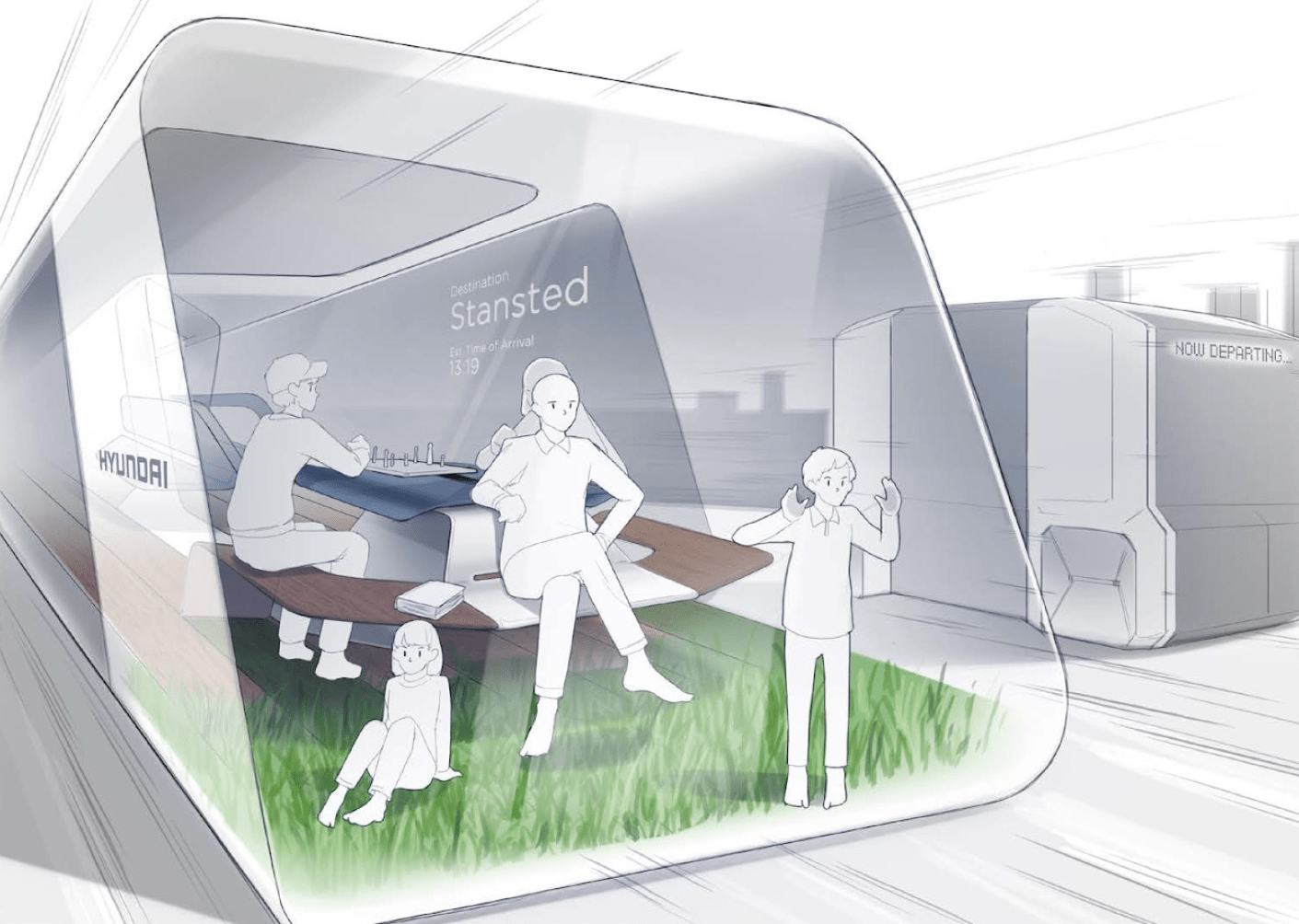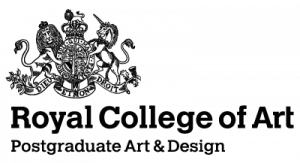MOSEY: Communities on the Move
MOSEY project’s challenge was to design a multimodal mobility solution for 2060, which creates a sense of community and is primarily for intercity travel. The user starts and ends their journey using the same low speed interconnected pod, which docks onto a high speed mothership, creating a door-to-door service. The pods are available as one or four seaters, giving the user flexibility as to whether they want more privacy, have a larger party or are happy to ride-share with strangers. The high speed mothership contains amenities such as a bar, seating areas, observation platforms and social zones. The interior design is followed through from pod to mothership, with flowing lines that guides the user to various zones. Onboard service bots can deliver food and drink in a non-invasive manner, to seating areas within the mothership and private areas in the pods. The option to have a private compartment or access to social areas links back to the core concepts of sharing, trust and choices. The three keywords for MOSEY are flexibility, interaction and convenience. The question was, how can you increase convenience within a system serving a multi-travel purpose? The main theme for this project is centered around community.
The team explored a variety of interior layouts, what the various touch points are and what design outputs best created a sense of community. The tagline created for this project was: Freedom from the monotony of long journeys. This highlights the fact that just because the user has to travel for an extended period of time, it does not mean that they have to be bored, lonely or tired throughout the journey. They should be able to interact with others if they choose to, have an area they can sit in peacefully and focus, and be able to take a long journey without having to worry about missing the next leg of the journey.
The system (Figure 38) starts by a pod moving up alongside the mothership in City A and docking in a vacant space. From there, the users either exit the pod and socialise with other passengers, or stay in their pod for a more peaceful and relaxing experience. Once the mothership is near City B, the users return to their pods where they will undock within the city limits, rejoining the flow of traffic.
